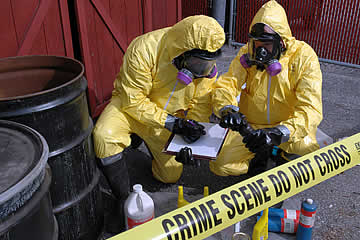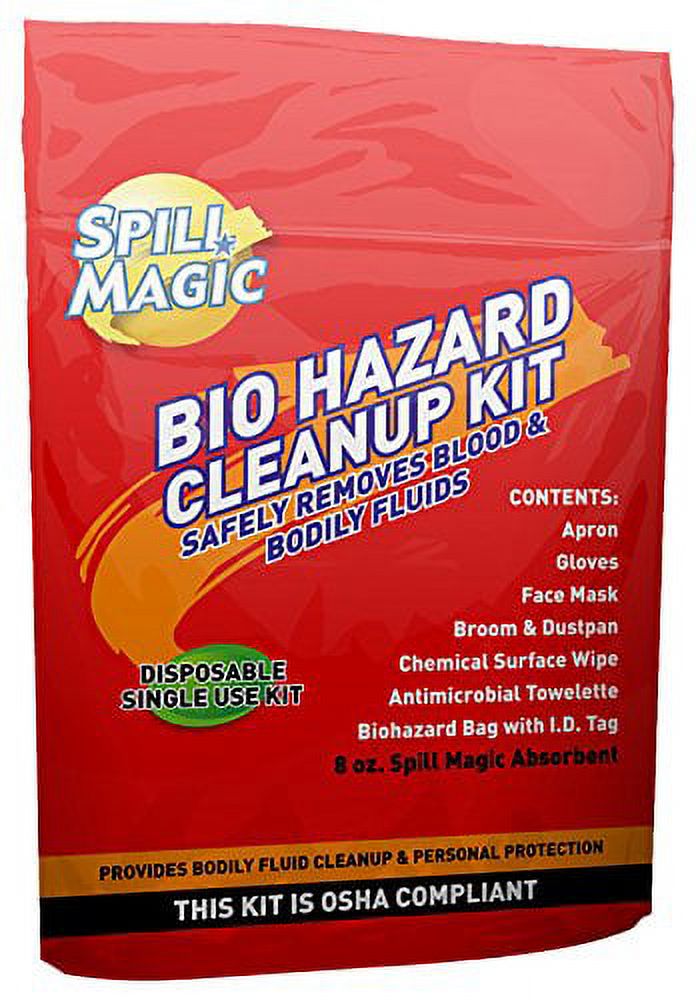Biohazard Removal: Safe Handling and Disposal of Hazardous Materials
Biohazard Removal: Safe Handling and Disposal of Hazardous Materials
Blog Article
Specialist Biohazard Cleaning and Decontamination for Blood, Bodily Fluids, and Hazardous Materials
The prospective health and wellness dangers associated with direct exposure to biohazards highlight the critical demand for precise handling and thorough clean-up. As we navigate the elaborate landscape of biohazard clean-up, understanding the nuances of regulations, conformity, and the customized devices at play ends up being critical in guaranteeing a thorough and secure purification procedure.
Health And Wellness Risks of Biohazard Direct Exposure
Direct exposure to biohazards positions considerable health and wellness dangers that can lead to serious consequences for neighborhoods and individuals alike. Biohazards incorporate a large range of organic materials, consisting of blood, physical liquids, mold, microorganisms, infections, and other possibly infectious products. When people come right into call with these biohazards, whether with mishaps, improper handling, or environmental exposure, they deal with the risk of contracting severe diseases or conditions.
One of the main health risks related to biohazard exposure is the transmission of contagious illness. Bloodborne virus such as HIV, hepatitis B and C, and various bacteria can be existing in biohazardous products, positioning a direct threat to human wellness. Breathing in air-borne biohazards like mold and mildew spores or entering into call with contaminated surfaces can also result in breathing issues, allergic reactions, and other damaging health impacts.
In addition, biohazard exposure can have long-lasting health effects, with some diseases materializing years after the first call (Blood Cleanup). As a result, it is essential to focus on appropriate biohazard cleansing and decontamination to reduce these health risks and ensure the safety and security of people and neighborhoods

Specialized Educating for Biohazard Clean-up
When it concerns handling biohazard cleaning effectively and safely, specialized training plays a fundamental duty in making certain correct purification procedures are followed. Biohazard cleaning calls for details expertise and abilities to efficiently alleviate risks associated with bloodborne virus, bodily liquids, and unsafe materials. Specialists learnt biohazard clean-up go through strenuous guideline on how to securely deal with, remove, and deal with biohazardous products to stop contamination and exposure.
Specialized training for biohazard cleaning covers a variety of important subjects, including proper personal protective equipment (PPE) use, bloodborne pathogen understanding, purification techniques, and contaminated materials disposal procedures. People learnt biohazard cleanup are outfitted with the required knowledge to assess contamination degrees, recognize prospective threats, and execute ideal clean-up treatments in compliance with regulative criteria.
Constant training and education and learning are vital in the area of biohazard cleanup to remain upgraded on the current purification innovations, safety and security protocols, and guidelines. By investing in specialized training, biohazard clean-up specialists can effectively respond to emergency situation cleaning situations and protect both public wellness and the setting.
Significance of Appropriate Purification Strategies
Utilizing proper decontamination methods is critical in biohazard cleanup to efficiently get rid of unsafe products and minimize wellness threats. Reliable decontamination not only guarantees the removal of noticeable traces of blood, physical liquids, and various other biohazards yet additionally targets invisible pathogens that might position significant health and wellness dangers if not appropriately removed. By following rigid purification procedures, educated experts can substantially minimize the danger of exposure to hazardous bacteria, infections, and germs that might cause infections or illness.
Proper decontamination techniques entail making use of specific devices and disinfectants that are specifically made to counteract biohazards properly. Thorough cleaning and disinfection of infected locations are necessary to stop the spread of virus and make certain a risk-free environment for owners. In addition, the right disposal of biohazardous waste complying with decontamination treatments is crucial in stopping contamination of other surface areas or individuals.

Tools and Tools for Safe Clean-up
When dealing with blood, bodily liquids, or dangerous products, biohazard cleansing experts depend on specialized gear to lessen exposure dangers and completely decontaminate the affected area. Additionally, biohazard cleaning packages having anti-bacterials, absorbing products, and biohazard bags are utilized to safely dispose and contain of contaminated things.
Advanced cleansing devices like hospital-grade disinfectants, HEPA-filtered vacuums, and misting equipments are used to sanitize surfaces and remove biohazards effectively. Specialized tools such as sharps containers and biohazard garbage disposal bins are utilized to safely take care of sharp objects and biohazardous Biohazard removal waste materials. By using the appropriate equipment and tools, biohazard cleaning experts can ensure a comprehensive cleaning procedure that focuses on security and decreases health and wellness risks for both employees and passengers of the damaged space.
Regulations and Conformity in Biohazard Cleaning
Correct adherence to laws and compliance standards is paramount in biohazard cleansing to guarantee the safety and security of both workers and the environment. Federal government agencies such as OSHA (Occupational Security and Wellness Management) and the EPA (Epa) have actually established specific standards for biohazard cleanup treatments to reduce wellness risks and ecological contamination. These regulations cover a variety of aspects including the handling, transport, and disposal of biohazardous materials, in addition to the necessary training and protective tools required for workers included in the clean-up process.
Biohazard cleaning companies have to remain updated with these regulations to ensure that their procedures fulfill the required security criteria. Failure to abide by these laws can result in serious repercussions, consisting of penalties, lawsuit, and threatening the wellness of people and the atmosphere. By following stringent laws and compliance steps, biohazard cleaning business can effectively reduce dangers and make sure a risk-free and complete cleaning procedure for all events included.
Conclusion
Finally, biohazard cleansing and decontamination call for specific training, correct strategies, and adherence to laws. Direct exposure to blood, physical liquids, and harmful products presents considerable health and wellness dangers, making it vital to make use of the ideal devices and devices for risk-free cleaning. By adhering to rigorous procedures and guidelines, professionals can effectively mitigate the threats related to biohazard direct exposure and make sure the safety of both themselves and others.
As we navigate the detailed landscape of biohazard cleaning, comprehending the nuances of regulations, conformity, and the specific equipment at play comes to be important in guaranteeing a safe and detailed decontamination procedure. (Blood Cleanup)
When it comes to dealing with biohazard cleanup successfully and safely, specialized training plays a fundamental role in making certain appropriate decontamination treatments are followed.Making use of appropriate purification strategies is crucial in biohazard cleaning to effectively eliminate harmful materials and decrease health and wellness threats. Furthermore, biohazard cleansing kits consisting of disinfectants, absorptive products, and biohazard bags are utilized to securely contain and get rid of of infected items.
Federal government firms such as OSHA (Occupational Security and Wellness Administration) and the EPA (Environmental Security Firm) have established details guidelines for biohazard clean-up treatments to minimize health and wellness dangers and ecological contamination.
Report this page